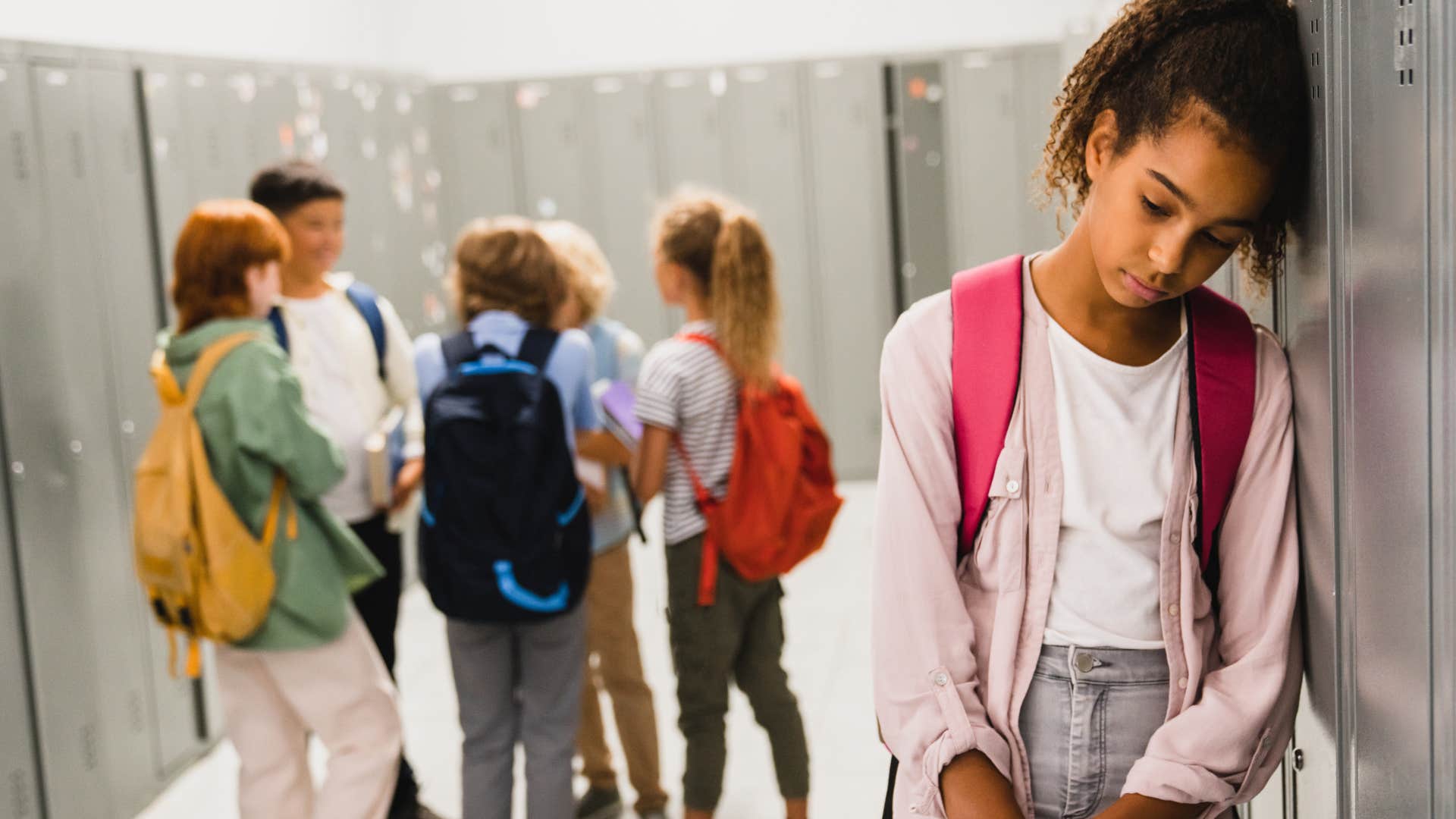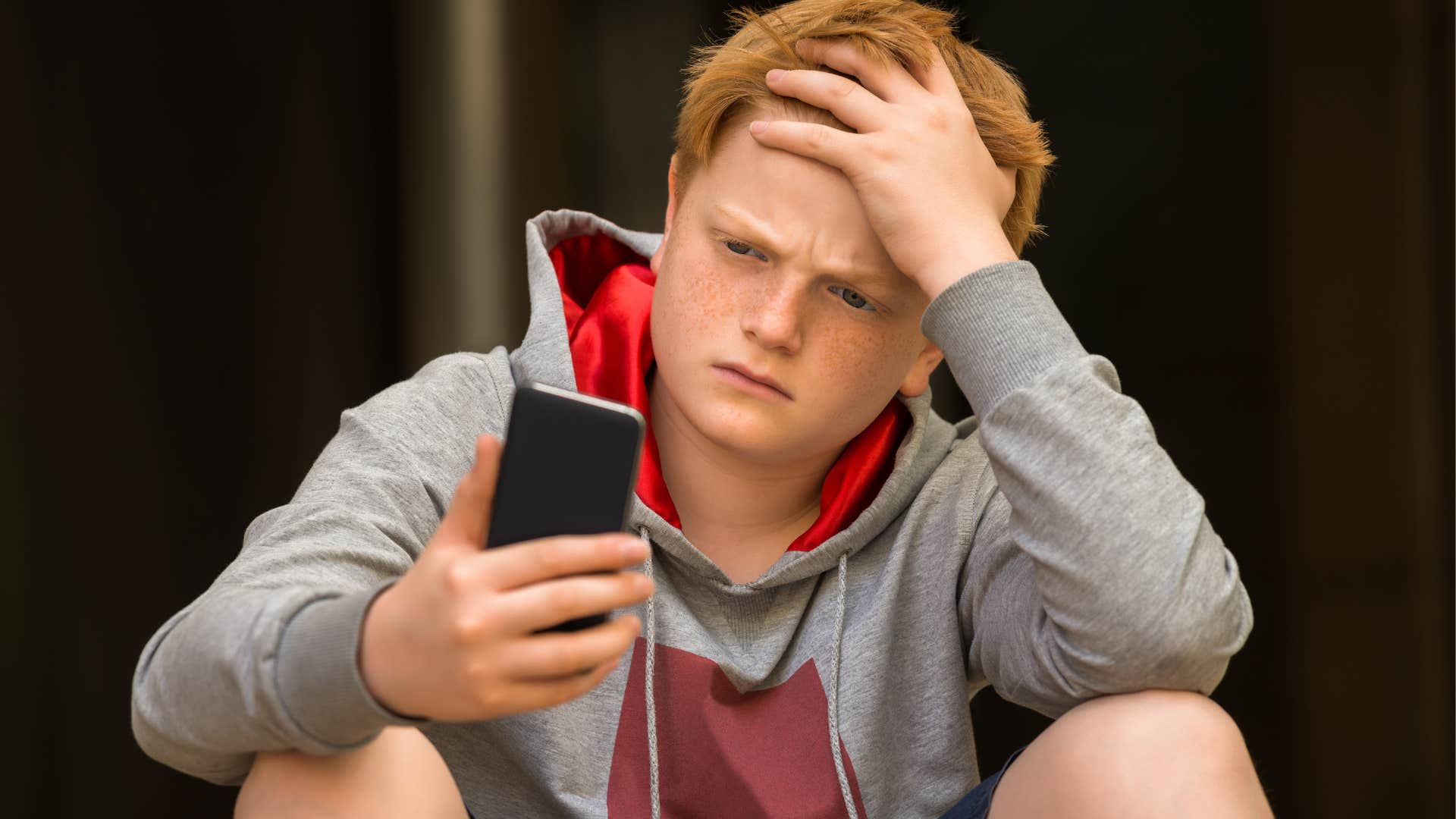10 Sad Ways Being A Teenager Was Never The Same After The 1990s
Teenagers have an entirely different world to navigate and it's far from easy.
 Master1305 | Shutterstock
Master1305 | Shutterstock From technological changes to evolving cultural norms, the adolescent experience constantly shifts from generation to generation and even from year to year. Usually, these children are not singlehandedly shaping the experience of being a teenager but rather the institutions and spaces they live in, navigate through, and experience throughout their lives and how they evolve.
From schools to family dynamics to public spaces, several sad ways being a teenager was never the same after the 1990s, and these can all be represented in the social dilemmas and unique struggles of younger generations today.
Here are 10 sad ways being a teenager was never the same after the 1990s
1.Teenagers today don't have ways to connect "unplugged".
 oneinchpunch | Shutterstock.com
oneinchpunch | Shutterstock.com
Third places, community-centric public areas where people can meet others, mingle, and engage in social interaction without financial or cultural barriers, have been slowly deteriorating over the past decade, sparking isolation in many demographics, specifically younger generations. From coffee shops that were once financially accessible to public parks, many teenagers can’t meet new people outside social media or school.
This isolation negatively affects teenagers’ social development and isolates them from foundational experiences and friendships that genuinely crafted older generations’ identities. Especially for teens in low-income communities, the isolation sparked by feeling excluded while wealthier friends go on trips, meet at coffee shops or see movies together can be profoundly upsetting.
As these younger generations of teenagers grow up, their social circles and friendships are crafted mainly by these socio-economic separations — sheltering many, cultivating harmful “Othering” attitudes in others, and restricting the benefits of the community from most young adults.
2.These days, teens don’t venture outside alone.
 Folenial | Shutterstock.com
Folenial | Shutterstock.com
With growing rates of parental protection and accessibility to toxic headlines and scary worldly issues online, many teenagers don’t have the freedom to venture out of their houses without supervision from home. From walking to school alone to meeting friends at the mall or even hanging out with friends in public without a parent, many teens are forced to live their lives under the watchful eye of the adults in their lives.
While this overprotective tendency might give parents some peace of mind, as a report from the Berkeley Political Review suggests, pushing the anxiety of “stepping back” down the road a few years only shelters kids during the most transformative and influential stage of their lives. They’re less likely to make mistakes in their youth or learn from core experiences that teenagers a few decades ago founded their independence on.
This sheltered experience and lack of life experience early in life not only keeps them from learning foundational social and problem-solving skills but also sparks an anxiety-focused mindset in their lives that prompts isolation and skepticism in adulthood.
3.Modern-day teenagers struggle more with their mental health.
 SeventyFour | Shutterstock.com
SeventyFour | Shutterstock.com
Primarily driven by the rise of technology, social media, and pandemic-related social consequences, many teenagers today struggle with higher rates of mental illness like depression and anxiety, according to a study from the World Health Organization. While more information about mental illness, including helpful resources for mitigating its consequences, can partially explain this rise in reported struggles, many teenagers are developing toxic coping mechanisms and habits because of this accessibility.
Specifically related to social media, many teenagers are forced into a “comparison culture” where they’re pressured to meet unrealistic expectations about body image, appearance, academic success, emotional intelligence, and even relationships this early in their lives. In a society driven mainly by external validation and competition, it’s difficult for teenagers to commit to their individuality — creating an isolating and stressful mindset that often follows them into adulthood.
4.Teens have unlimited access to anxiety-inducing news.
 Fast-stock | Shutterstock.com
Fast-stock | Shutterstock.com
Unfortunately, younger generations of Internet-savvy teenagers often have much more exposure to heavy, intense, and scary news headlines and worldly issues than their older counterparts at the same age. As a result, they’re forced to carry burdens of guilt, shame, and fear, especially when they don’t have the resources to cope healthily with this information.
It can be confusing and incredibly disillusioning to log onto social media and watch horrible videos about the world and testimonies from people living through tragedies, only to turn your phone off and try to resume your typical life — even for an adult. While supportive family environments and open communication can help to mitigate this anxiety, at least according to a report from Akron Children’s, most parents aren’t equipped with the information, knowledge, or time to start these difficult conversations.
5.Teenagers these days rely on technology for community.
 DimaBerlin | Shutterstock.com
DimaBerlin | Shutterstock.com
Without “third places” or unrestricted “play” outside of their homes, many teenagers and young adults are forced to meet friends, seek out community, and communicate with others online. While this can be beneficial in many ways, especially for LGBTQ+ kids and rural teens who don’t have many shared experiences with the people at home or school, there are several consequences to this reliance on technology for social interaction.
From targeted toxic algorithms, pushing inappropriate content on teenagers to a lack of proper social skill development and critical thinking, these young adults are stuck between a rock and a hard place — they’re yearning for community but are only able to fulfill that need at the expense of their emotional and physical wellbeing.
6.There is more pressure than ever on teenagers to excel academically.
 Prostock-studio | Shutterstock.com
Prostock-studio | Shutterstock.com
According to an investigation by The Harvard Gazette, many young adults and teenagers today are developing toxic transactional relationships and struggling with poor self-esteem primarily because of intense academic and “achievement pressures.” This intense pressure is cultivated mainly by parental expectations and educational standards, which have significantly evolved over the past three decades.
As modern parents continue to experience financial hardship, the insecurity of the job market, and difficulty solidifying their comfort in adulthood, it’s no surprise that they’re wishing more for their own kids—they’re pressuring them to succeed, get into great colleges, get good grades, and have great friends. However, they also aren’t entirely capable of emotionally supporting them in ways that can help them truly succeed.
Many teenagers today are also falling victim to the consequences of standardization at school — where standardized tests, ingrained in the funding process for school districts, reward academic achievement and “perfect students” over all else. Struggling students fall through the cracks, individuality is suppressed, and the uniqueness and talents of students (who aren’t academic) are inadvertently ignored.
7.There is more pressure on teens to follow trends thanks to technology.
 Inside Creative House | Shutterstock.com
Inside Creative House | Shutterstock.com
With the consequences of online comparison culture, many modern teenagers fall victim to isolation by trying to adopt every trend, meet every impossible appearance expectation, and succeed in all the right ways. They don’t feel like they can be themselves — and many don’t even have the resources or skills to figure out who they are — without adopting outside pressures of perfectionism.
Especially as many households struggle with economic insecurity and financial hardship, teenagers also resent their parents for not having the luxury of following these trends, whether it be purchasing the newest Stanley water bottle or buying a ticket to the concert everyone at school is bragging about attending.
8.Modern teenagers are less empathetic.
 Max Kegfire | Shutterstock.com
Max Kegfire | Shutterstock.com
Research from the University of Michigan reports that young adults in college are 40% less empathetic today than they were nearly 30 years ago, primarily because of the negative impacts of technology and social isolation. Struggling to learn emotional intelligence and literacy from behind a screen, many teenagers today struggle to maintain healthy social connections because they never learned how to read and empathize with other people’s intense emotions and body language.
Especially in our modern society, which has grown incredibly competitive amidst school standardization, financial hardship, and an insecure job market, many teenagers don’t view their peers as friends or equals but as people they need “to beat” in order to safeguard their own success, validation, and recognition.
9.Teenagers struggle with maintaining healthy relationships with their parents.
 Fizkes | Shutterstock.com
Fizkes | Shutterstock.com
Feelings of resentment fueled by household financial crises, paired with the rise of overprotective parenting styles, have created a tumultuous trend in many family households across the country.
According to a 2022 study from the Developmental Psychology journal, parenting during the teenage years is hard enough, as parents spend less time with their kids, convey less warmth and compassion, and become more harsh with discipline. Still, modern teens are struggling with this relationship even more than their older peers.
Alongside the chaotic and complex challenges of the modern world, from political stressors to socio-economic strains, many teens struggle to connect with their parents and convey the empathy and compassion necessary for a healthy relationship.
10.Teens are less prepared for adulthood today.
 Andrey_Popov | Shutterstock.com
Andrey_Popov | Shutterstock.com
According to a study published by the Child Development Journal, teenagers today grow up much slower than their peers in the late 1990s and engage in fewer “adult activities” like working a job and driving. Between 2010 and 2016, only 32% of young adults worked for pay, compared to nearly 64% in the early 1990s.
With fear-driven parenting styles, more mental health struggles, and a great emphasis on academic success, it’s not surprising that modern teenagers are struggling to prepare for adulthood — centered around social connection, independence, and confidence.
Zayda Slabbekoorn is a news and entertainment writer at YourTango who focuses on health and wellness, social policy, and human interest stories.

